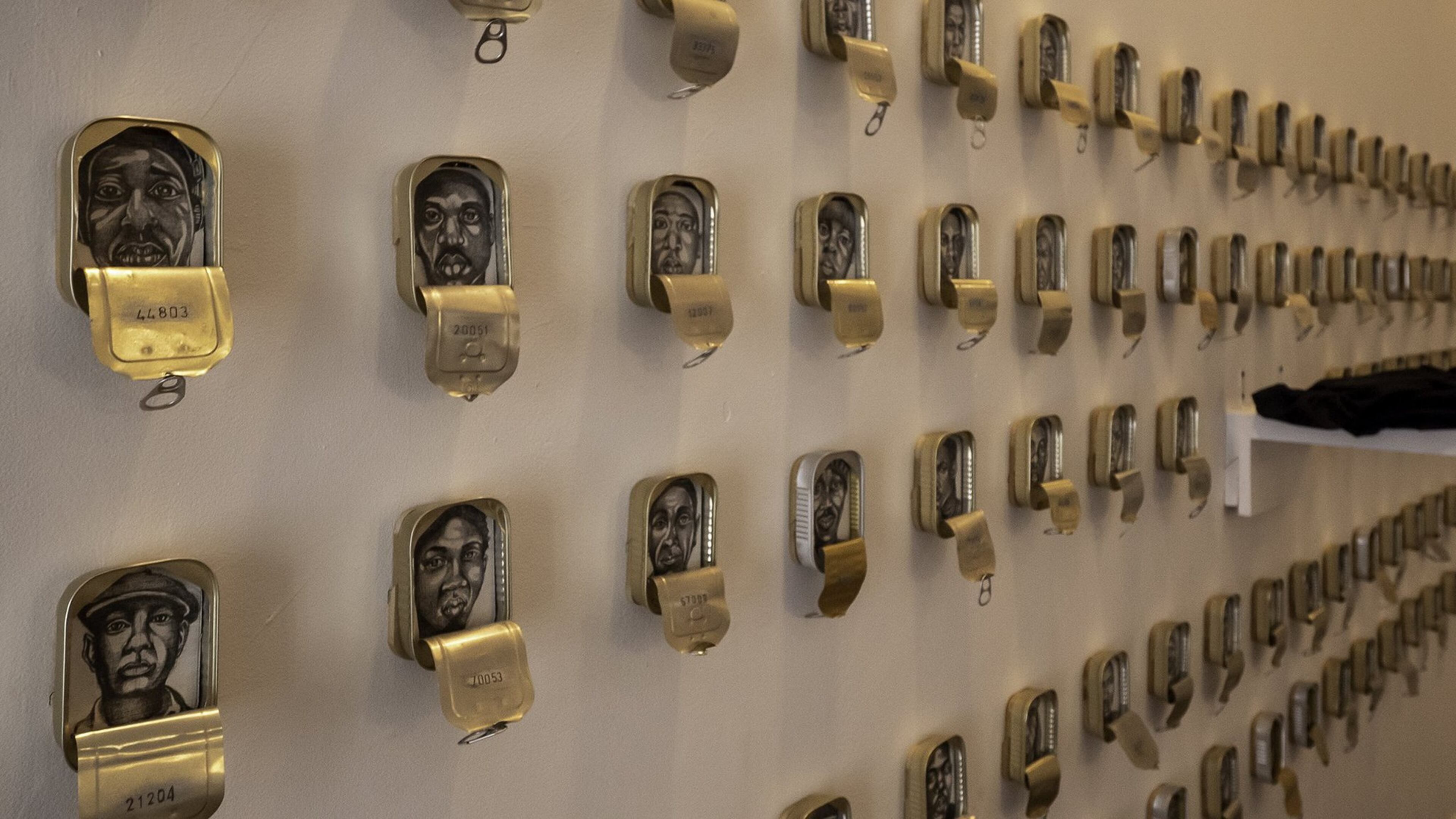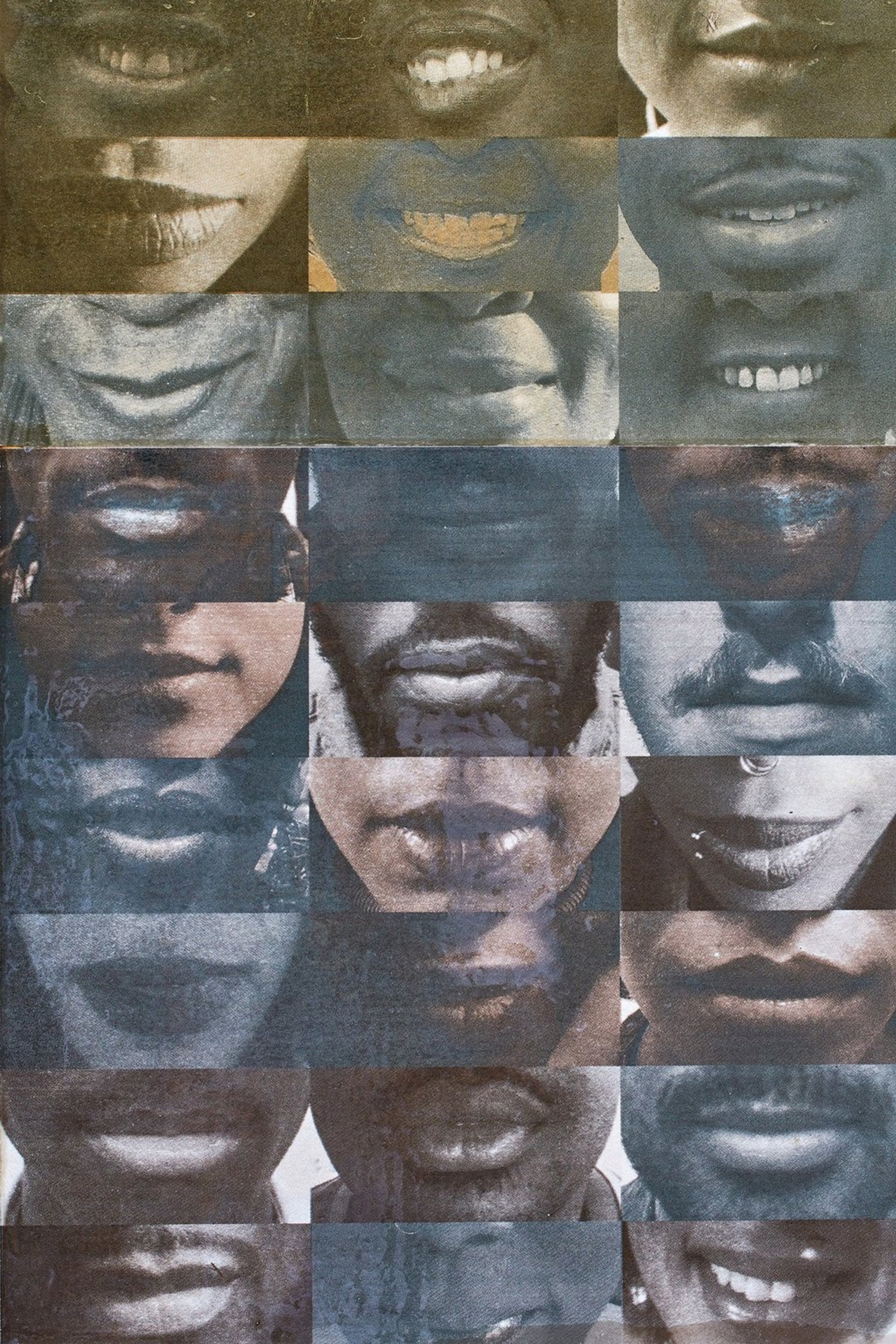An uneven but earnest view of race in Atlanta artist’s show.

Atlanta actor and visual artist Masud Olufani has created an exhibition at the Hammonds House Museum that talks about one of the most pernicious and painful divides in America, between the black experience and the white experience.
Olufani tells the story of race in “Translocation & Transfiguration,” his solo show at Hammonds in stark, symbolic visual language often rooted in ordinary objects: sardine tins, beehives, a baby’s cradle, wooden school desks. The plainspoken manner of his storytelling helps his audience see racism as something commonplace and habitual too. It’s not complex, Olufani affirms. Hatred is right in front of us, in the language we use, in how we view black men as a threat, in our prison system.

Olufani takes complex subjects and boils them down to potent images that often express a troubling duality like “Cane Fields Number 1.” The work pairs the kind of machete used to cut sugar cane — one of the most notoriously brutal harvests for slaves — and a scorched copy of economist-philosopher Adam Smith’s book “Wealth of Nations.” For Smith, slavery was incompatible with a properly operating economic system. But by pairing Smith’s book, and that tool of the most vicious kind of labor, Olufani shows a cruel dichotomy between the abstract theories of intellectuals and the brutal, real world suffering of the human beings who underpinned the economic system. In all of his work for “Translocation & Transfiguration” Olufani suggests that black people have been reduced to mute bodies, stripped of the humanity that would afford them agency. What is abstract to a philosopher is lived reality to the slave.
The work on view can be intensely personal like “A Letter for Milton,” which features a page threaded into a vintage typewriter that describes an absent father and the toll that takes on his son.

But more often, it is larger, societal problems that consume Olufani. In “Pipeline” the kind of wooden chair and desk you’d find in a Fifties classroom becomes an image of promise denied when black hands cast in resin and wearing a pair of handcuffs suggest systemic limitations on black progress in a pipeline from school to prison.
If viewers are open to letting their defenses down, there is much to be gained from this contemplation of what life feels like when everything from your interactions with police to your health care, the education you receive and the language used to describe you are cruel reminders that your humanity is not a given.
At key moments in “Translocation & Transfiguration” Olufani is capable of raising goosebumps with a kind of sorrowful vision of enduring inequities.
But the exhibition itself is a mixed bag. Several pieces will be familiar to audiences who have seen them pop up in other shows. In such instances Olufani seems less concerned with creating a coherent thematic whole as he is with finding new and old examples to sound his drumbeat of racial injustice.

Some of the work feels didactic, even derivative, referencing the art of Glenn Ligon, Dread Scott and David Hammons and others who have also used readymade materials to comment upon race and American life, though Olufani is prone to telegraph more and do more hand holding of his audience.
But many of the works are powerful in their own right, like “Hive: Elegy for the Fallen.” Suspended on a branch above the gallery space, the hive is a buzzing cacophony of bees that blends with the recorded sounds of a gospel choir. The soundtrack is an abstracted, painful lament for the fallen silk-screened leaves below which bear the faces of men and children like Trayvon Martin and Tamir Rice, killed for the circumstance of being black.
ART REVIEW
“Translocation & Transfiguration”
Through March 22. 10 a.m.-6 p.m. Wednesdays-Fridays and Saturdays; 1 p.m.-5 p.m. Saturdays-Sundays. $7; $5 seniors citizens (ages 62 and older); $5 students; free for children ages 12 and younger and museum members. Hammonds House Museum, 503 Peeples St. SW, Atlanta. 404-612-0481, hammondshouse.org
Bottom line: Well-crafted work tied to some justified outrage fuels the vision of this Atlanta artist.

